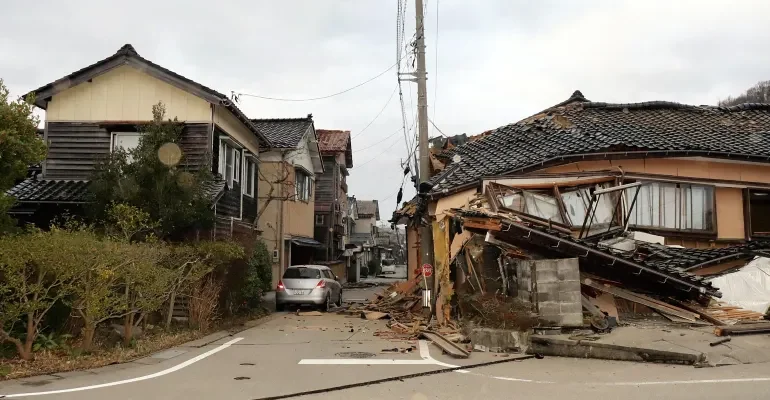
A powerful magnitude 7.6 earthquake struck western Japan, triggering a tsunami warning across coastal areas. The quake originated at a depth of 10 kilometers in the Noto Peninsula of Ishikawa prefecture, causing buildings to collapse, fires to break out, and prompting immediate evacuations.
The Japan Meteorological Agency swiftly issued a tsunami warning for western Japan, with the first waves hitting the coast just over 10 minutes later. Wajima in Ishikawa reported tsunami waves of 1.2 meters, but no immediate damage was reported. Suzu City reported damaged buildings, injuries, and individuals trapped in houses, though no fatalities have been reported.
The Defense Ministry mobilized 1,000 military personnel for rescue efforts. Hospital officials in Suzu received injured individuals, and damaged roads hindered some doctors from reaching work.
Japan experienced its first “major tsunami warning” since the devastating 2011 earthquake, later downgraded to a “tsunami warning.” Chief Cabinet Secretary Yoshimasa Hayashi urged residents in affected areas to evacuate to higher ground.
NHK footage captured intense shaking as waves slammed into the coastline, resulting in collapsed roofs and shaken foundations. Shinkansen bullet train services were suspended, and social media videos depicted store aisles strewn with goods.
Over 32,500 homes in Ishikawa were left without power, but nuclear plants reported no abnormalities. Aftershocks, including a 6.2 magnitude quake, continued, prompting warnings of potential building collapses and landslides over the next week.
Japanese Prime Minister Fumio Kishida established a disaster response headquarters, prioritizing human lives in damage assessment efforts. Tsunami waves were reported along Japan’s western coast, and South Korea monitored sea level changes. Eastern Russian cities faced a tsunami threat, with no evacuations reported yet. The situation remains fluid as authorities work to assess the damage’s full extent and ensure the affected regions’ safety.